Climate
-
Temperature
18-30°C -
Rainfall
50-75mm -
Sowing Temperature
18-20°C
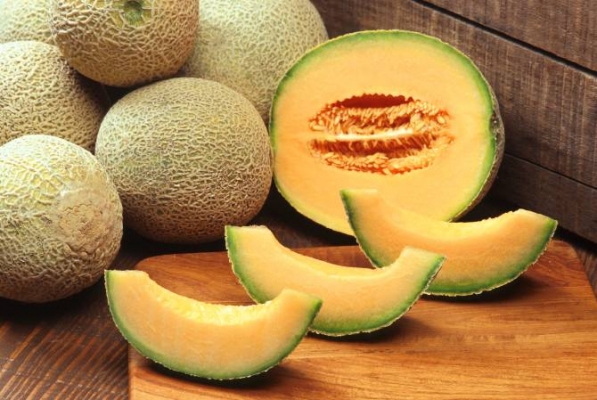









It grows well in deep fertile and well drained soil. It gives best result when grown on well drained loam soil. Soil having poor drainage capacity is not suited for Muskmelon cultivation. Follow crop rotation as continuous growing of same crop on same field leads loss of nutrients, poor yield and more disease attack. pH of soil should be in between 6-7. Alkaline soil with high salt concentration is not suitable for cultivation.
Hara Madhu: Late maturing variety. Fruits are of large size, round shape having average weight of about one kg. Skin is of light yellow color. TSS contain is about 13% and very sweet in test. Flesh is of green color, thick and juicy. Seeds are of small size. It is resistant to powdery mildew. It gives average yield of 50qtl/acre.
Durgapur Madhu: Popular variety, known for its sweetness and fragrance. It is resistant to root rot, powdery mildew.
RM 50
MHY 3
MHY 5
Other state varieties:
Arka Jeet
Arka rajhans
MH 10
Pusa madhurima
D. Madhu Madhuras
Plough land for three to four times and bring soil to fine tilth. Take planking operations after each ploughing.
Time of sowing
First week of February to March is optimum time for musk melon cultivation.
Spacing
Prepare bed of 3-4m wide depending upon variety use. Keep row to row distance of 2meter and plant to plant distance of 60cm.
Sowing Depth
Plant seed about 1.5cm deep.
Method of sowing
For Sowing dibbling method and transplanting methods can be used.
Transplanting: Sow seeds in polythene bag of 15cm x 12cm size with thickness of 100gauge in last week of January or first week of February. Fill polythene bag with equal proportion of well rotten cow dung and soil. Seedlings are ready for transplantation by end of February or first week of March. Transplant seedling of 25-30 days old. Apply irrigation immediately after transplantation.
Seed Rate
Use 600-800 gm of seeds for sowing one acre land.
Seed Treatment
Before sowing treat seed with Carbendizim@2gm/kg of seeds. After chemical treatment, treat seeds with Trichoderma viride@4gm per kg of seeds. Dry seeds in shade and then do sowing immediately.
Fertilizer Requirement (kg/acre)
| UREA | SSP | MOP |
| 70-90 | 100 | 30 |
Nutrient Requirement (kg/acre)
| NITROGEN | PHOSPHORUS | POTASH |
| 30-40 | 16 | 16 |
20-25 days before sowing, apply Farm Yard Manure or well decomposed cowdung@6tonnes per acre and mix well in soil. Watermelon required Nitrogen@32-40kg, Phosphorus@16kg and Potash@16kg in form of Urea@70-90kg, Single Super Phosphate@100kg and Muriate of Potash@30kg per acre. Apply whole amount of Phosphorus, Potash and one third amount of Nitrogen at time of seed sowing. Apply remaining dose of Nitrogen in two equal parts, 25-30 days after sowing and second dose at time of flower formation near vines base, avoid touching it and mixed well in soil.
When crop is of 10-15 days old, for good growth of crop along with good quality, take spray of NPK 19:19:19+Micro-nutrients@ 2-3gm/Ltr of water. Prevent flower drop and increase yield up to 10% take spray of Humic acid@3ml + MAP(12:61:00)@5gm/Ltr of water at flowering stage. After 55 days of sowing spray 13:00:45@100gm + Hexaconazole @25ml/15Ltr water for fast development of fruits and protection against powdery mildew. 65 days after sowing to increase in fruit size, sweetness and colour take spray with 0:0:50 @1.5kg/acre using 100gm/15Ltr of water.
For quick germination of seeds apply irrigation immediately after sowing. Apply remaining irrigation at interval of 5-7days. At time of maturity give irrigation only when needed. Avoid over irrigation also at time of applying irrigation, should not wet the vines or vegetative parts, especially during flowering and fruit-set. To get better sweetness, for better flavour; stop irrigation or reduce watering 3-6days before harvesting.
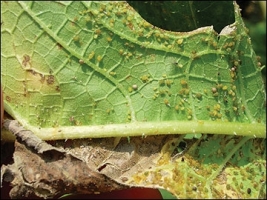
Aphid and Thrips: They suck the sap from the leaves resulting in yellowing and drooping of leaves. Thrips results in curling of leaves, leaves become cup shaped or curved upward.
If infestation is observed in field, to control spray the crop with Thiamethoxam@5gm/15Ltr of water. If infestation of sucking pest and powdery/downy mildew is observed, take spray of Thiamethoxam and 15days after spraying, spray with Dimethoate@10ml+Tridemorph@10ml/10Ltr of water.
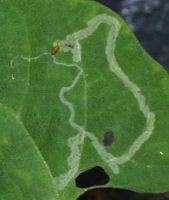
Leaf Miner: Maggots of Leaf Minor feed on leaf and make serpentine mines into leaf. It affects the photosynthesis and fruit formation.
If infestation of leaf minor is observed, take spray of Abamectin@6ml/15Ltr of water.
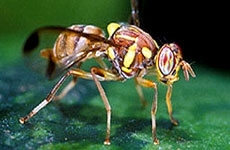
Fruit fly: It is serious pest. Females lay eggs below epidermis of young fruits. Later on maggots feed on pulp afterward fruits starts rotting.
Remove and destroyed infected fruits away from field. If infestation is observed, at initial stage take spray of Neem seed kernal extracts@50gm/Ltr of water. Take spray of Malathion@20ml + Jaggery@100gm in 10litre of water 3-4times at 10days interval.
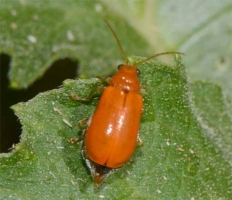
Red beetle: Red color insect, cause damaged by feeding on new leaves. In severe infestation, it destroy crop completely.
If infestation is observed, take spray of Acephate 75SP@0.5gm/Ltr of water. If necessary take second spray of Acephate with interval of 15 days.
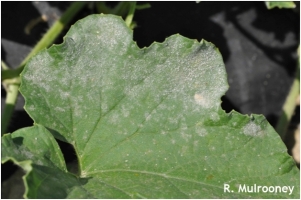
Powdery Mildew: Patchy, White powdery growth appears on upper surface of leaves also on main stem of infected plant. It parasitizes the plant using it as a food source. In severe infestation it causes defoliation and premature fruit ripening.
If infestation is observed take Spray of water soluble Sulphur@20gm/10Ltr of water 2-3times with interval of 10days.
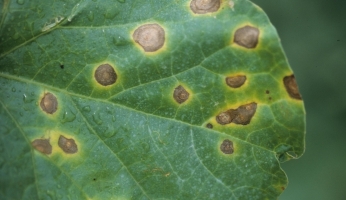
Anthracnose: Anthracnose affected foliage appears scorched appearance.
As a preventive measure, treat seed with Carbendazim@2gm/kg of seed. If infestation is observed in field, take spray of Mancozeb@2gm or Carbendazim@0.5gm/liter of water.
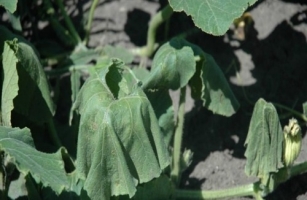
Sudden wilt: It can affect crop at any stage. Plant get weak and give yellow appearance at initial stage, in severe infestation complete wilting is observed.
Avoid waterlogging in field. Destroy infected parts away from field. Apply Trichoderma Viride@1kg/acre mixed with 50kg FYM or Well decomposed Cowdung. If infestation is observed, take spray of Mancozeb or Copper Oxychloride@2.5gm/liter or Carbendazim or Thiophanate-methyl@1gm/liter of water.
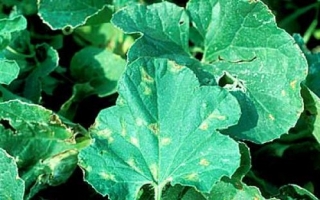
Downy Mildew: It occurs frequently in muskmelon and less in case of watermelon. Yellowing occurs on upper side of leaves. Later yellowing get increases and center of leaves turning brown. Underside of leaves white-gray light blue fungus appears. Cloudy, rainy and humid conditions are favorable for spread of this disease.
If infestation is observed in field, take spray of Metalaxyl 8%+Mancozeb 64% WP( Ridomil)@2gm/Ltr of water.
Harvesting of Haramadhu should be done when fruits turn to yellow. Harvest other variety depending upon market distance. For long distance markets harvest fruits at mature green stage where as for local markets harvest at half-slip stage. A slight depression of the stem end indicates half-slip stage.
After harvesting do precooling to reduce field heat. Grading is done on basis of size of fruit. Muskmelons harvested at partial slip can be held for up to 15 days at 2 to 5°C at 95% relative humidity whereas Muskmelons harvested at full slip can be held for 5 to 14 days at 0 to 2.2°C at 95% relative humidity.
It is most important economical vegetable cultivated in tropical, subtropical and temperate region of world. These are mother fruits of several better-known cultivars. Muskmelon is rich source of Vitamin A and Vitamin C. It contains about 90% of water and 9% Carbohydrates. In India muskmelon growing state includes Punjab, Tamil Nadu, Uttar Pradesh, Maharashtra, and Andhra Pradesh.
You have successfully login.
Your email and password is incorrect!